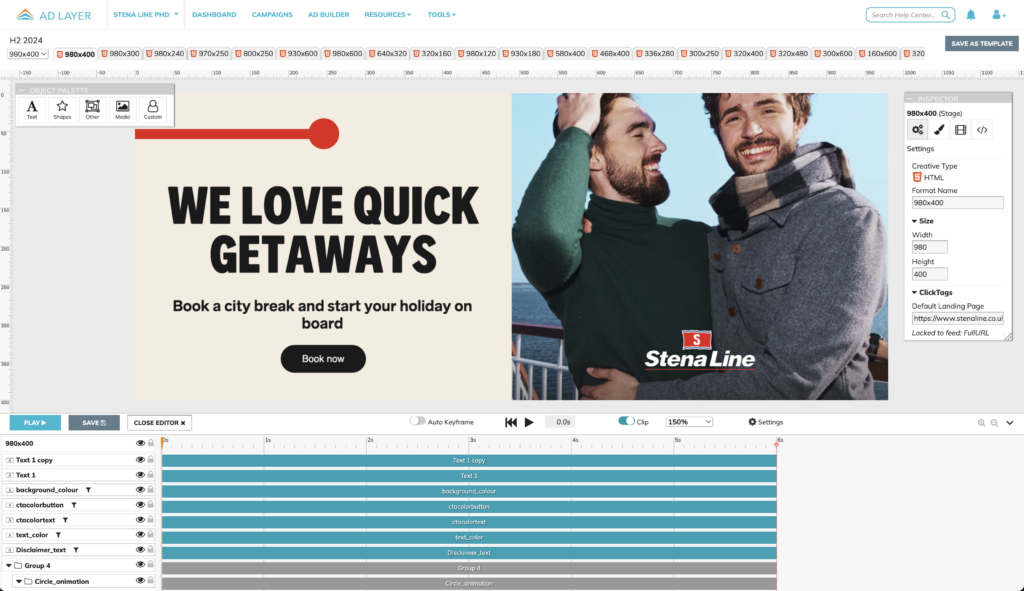/https%3A%2F%2Fwww.adlayer.se%2Fwp-content%2Fuploads%2F2025%2F03%2Fstena-line-ad-layer-digital-advertising-solution.png)
From Challenge to Success: Innovation and Scalability Driving Stena Line’s Journey
Three years ago, Stena Line – one of Europe’s leading ferry operators – faced a major challenge: How could they successfully manage a new, centralized marketing model across eleven markets, with a leaner team while meeting increasing demands for efficiency?
The Challenge: Streamlining Ad Production Without Losing Local Relevance
Before centralization, each market worked with its own advertising agency, ensuring local relevance but at the cost of high expenses and brand fragmentation. With multiple teams and a mix of advertising, media, and specialist agencies, Stena Line set a new goal in 2022.
To future-proof their marketing operations, Stena Line opted for a centralized marketing approach—but without compromising scalability or local adaptability. The central marketing team invested in digital technology and automation to create a flexible, scalable solution for digital advertising.
“We needed a solution and workflow that not only saved time and money but also enabled us to quickly create locally relevant campaigns while maintaining a unified brand presence,” says Fredrik Bayati, Group Media Manager at Stena Line.
After thorough evaluation, Stena Line, in collaboration with their media agency Omnicom, partnered with Ad Layer—a platform designed to create, manage, and optimize digital campaigns. Ad Layer’s Dynamic Creative Optimization (DCO) technology allows content to automatically adapt based on location, time, and audience.
“Ad Layer has allowed us to consolidate our digital production in one place while making the entire process faster and more efficient,” Fredrik explains.

Fredrik Bayati, Group Media Manager, Stena Line
The Results: A New Standard of Efficiency, Relevance, and Scalability
The latest campaign is a prime example of success. With Ad Layer, Stena Line produced over 1,500 ad variations and launched them across eleven markets simultaneously—something previously unthinkable from both a cost and production perspective.
“With Ad Layer, we’ve reduced costs by up to 70% through automation while ensuring brand consistency across all eleven markets,” says Fredrik.

Beyond efficiency, the new model has freed up resources to focus on strategic initiatives, creative development, and innovation. The next step for Stena Line is to internally scale this new approach and implement an advanced image bank system that will automatically generate market- and campaign-specific content.
Their long-term ambition is to personalize communication in digital channels while building an even more flexible and sustainable marketing model that meets future demands.

Keys to Success
Fredrik Bayati highlights three key factors behind Stena Line’s transformation:
- Cost Savings & Efficiency
- Automation and centralization have resulted in up to 70% cost savings, allowing the team to reinvest in strategic initiatives.
- Scalability & Speed
- The ability to launch highly customized ad variations simultaneously has boosted both reach and targeting precision.
- Flexibility & Relevance
- Real-time adjustments through DCO technology ensure campaigns remain relevant, engaging, and highly effective.
Stena Line’s journey proves that with the right technology, strategy, and innovation, marketing transformation is not just about efficiency—it’s about creating a scalable, future-proof model that drives long-term success.
